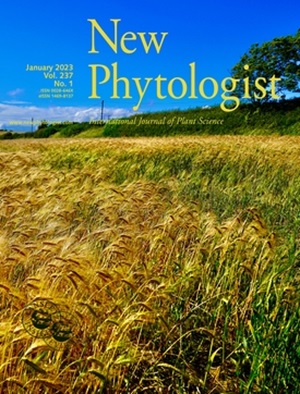微调桅杆播种:随着资源的积累,植物对天气信号变得更加敏感
IF 8.3
1区 生物学
Q1 PLANT SCIENCES
引用次数: 0
摘要
种子生产的年际变化具有深远的生态影响,包括对森林更新和种子消费者种群动态的影响。了解控制种子的机制对预测植物种群和生态系统动态在未来的变化,以及对种子产量的短期预测有助于管理具有重要意义。本研究通过对雪竹(Chionochloa pallens)个体开花努力和欧洲山毛榉(Fagus sylvatica)种子产量的长期观察,来测试内源资源水平和天气变化如何在驱动开花过程中相互作用。在这两个物种中,天气线索和植物资源之间存在相互作用。如果资源储量高,即使微弱的温度提示也会引发相对较高的繁殖努力,而即使在强烈的温度提示存在时,资源枯竭也会抑制繁殖。资源动态对植物的繁殖具有抑制和促进的双重作用,使植物能够在不同的提示频率下微调大播年之间的间隔长度。资源储量和天气线索之间的强烈相互作用在全球造林工作中日益重要的桅杆预报模式中得到直接应用。此外,资源储备在植物响应天气信号中的重要作用将决定植物对气候变化的响应。本文章由计算机程序翻译,如有差异,请以英文原文为准。
Fine-tuning mast seeding: as resources accumulate, plants become more sensitive to weather cues
- Interannual variability of seed production, masting, has far-reaching ecological impacts, including effects on forest regeneration and the population dynamics of seed consumers. It is important to understand the mechanisms driving masting to predict how plant populations and ecosystem dynamics may change into the future, and for short-term forecasting of seed production to aid management.
- We used long-term observations of individual flowering effort in snow tussocks (Chionochloa pallens) and seed production in European beech (Fagus sylvatica) to test how endogenous resource levels and weather variation interact in driving masting.
- In both species, there was an interaction between the weather cue and plant resources. If resource reserves were high, even weak temperature cues triggered relatively high reproductive effort, and depleted resources suppressed reproduction even in the presence of strong cues.
- Resource dynamics played dual roles of both suppressant and prompter of reproduction, allowing plants to fine-tune the length of intervals between large seeding years regardless of variable cue frequency. The strong interaction between resource reserves and weather cues has immediate application in mast forecasting models increasingly important for global afforestation efforts. Moreover, the important role of resource reserves in the plant response to weather cues will dictate the masting responses to climate change.
求助全文
通过发布文献求助,成功后即可免费获取论文全文。
去求助
来源期刊

New Phytologist
生物-植物科学
自引率
5.30%
发文量
728
期刊介绍:
New Phytologist is an international electronic journal published 24 times a year. It is owned by the New Phytologist Foundation, a non-profit-making charitable organization dedicated to promoting plant science. The journal publishes excellent, novel, rigorous, and timely research and scholarship in plant science and its applications. The articles cover topics in five sections: Physiology & Development, Environment, Interaction, Evolution, and Transformative Plant Biotechnology. These sections encompass intracellular processes, global environmental change, and encourage cross-disciplinary approaches. The journal recognizes the use of techniques from molecular and cell biology, functional genomics, modeling, and system-based approaches in plant science. Abstracting and Indexing Information for New Phytologist includes Academic Search, AgBiotech News & Information, Agroforestry Abstracts, Biochemistry & Biophysics Citation Index, Botanical Pesticides, CAB Abstracts®, Environment Index, Global Health, and Plant Breeding Abstracts, and others.
 求助内容:
求助内容: 应助结果提醒方式:
应助结果提醒方式:


